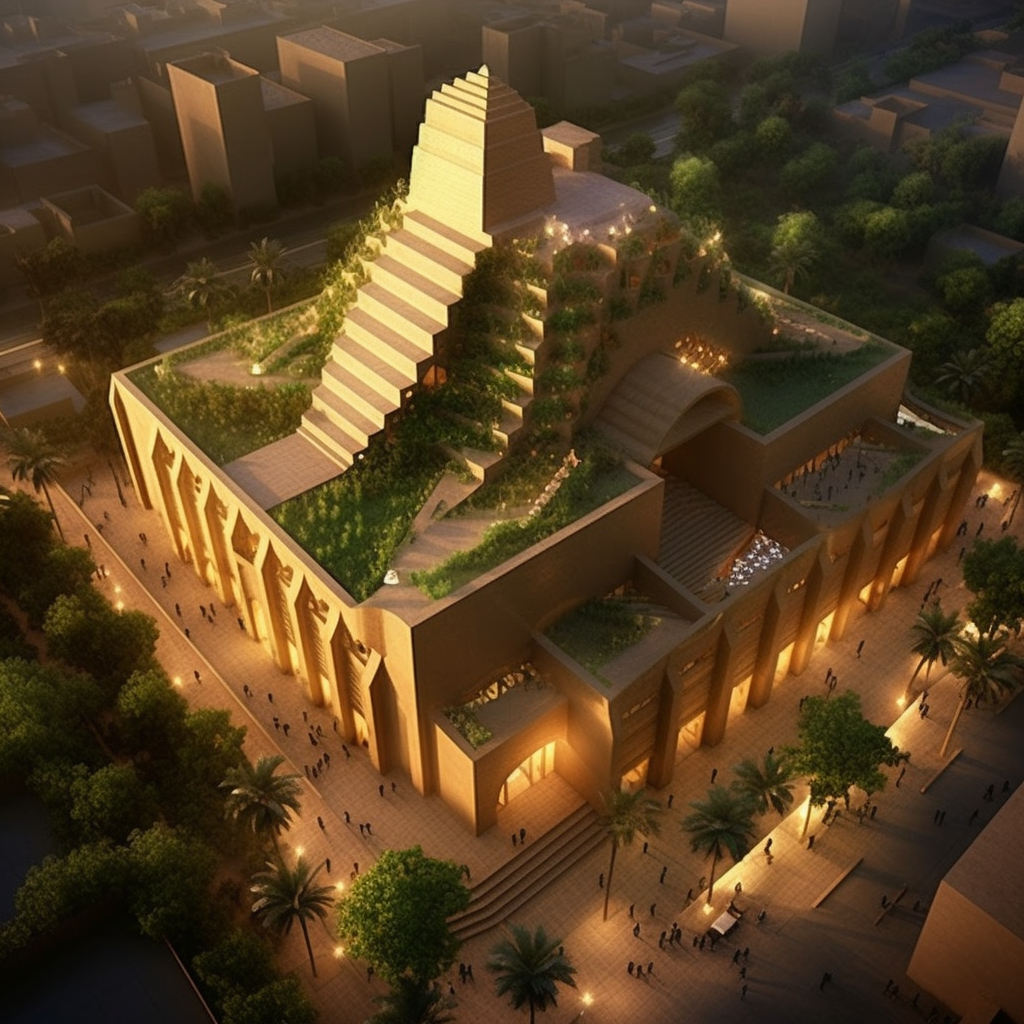10 Imaginary Mosque Designs: Merging Rich History, Present, and Future Through AI-Inspired Concepts
In this fascinating exploration of architectural creativity, we harness the power of artificial intelligence to generate captivating mosque designs. Drawing inspiration from various historical eras and cultural influences, we infuse these concepts with a futuristic vision, resulting in a striking blend of past and present. By collaborating with AI, we unlock the potential for fresh and innovative ideas.
The concepts presented in this article were conceived by ChatGPT, while the images were brought to life using a combination of advanced AI image generators and human artistry. As you immerse yourself in these visually stunning depictions, allow your imagination to soar and appreciate the harmonious fusion of tradition, innovation, and technology.
Byzantine-Inspired Cyber Mosque
Drawing from the rich history of Byzantine art and architecture, this concept combines traditional elements like mosaics, domes, and arches with futuristic cyberpunk aesthetics. The mosque features holographic calligraphy, neon-lit minarets, and a high-tech prayer hall.


Modern Babylonian Mosque
Inspired by the ancient Mesopotamian civilization, this concept fuses elements of Babylonian and Assyrian architecture with modern design and technology. The mosque features hanging gardens, ziggurat-inspired structures, and sustainable features such as solar panels and green roofs.
Timurid Techno-Mosque
This concept pays tribute to the Timurid Empire’s architectural legacy while incorporating cutting-edge technology and futuristic design elements. The mosque features a blend of ornate tilework, domes, and minarets with interactive LED displays, smart lighting, and advanced acoustics.


Umayyad Avant-Garde Mosque
Taking inspiration from the Umayyad Caliphate’s architectural heritage, this concept fuses traditional design elements like courtyards, arcades, and geometric patterns with avant-garde materials such as glass, metal, and kinetic sculptures.
Fatimid Fusion Mosque
This mosque concept celebrates the rich history of the Fatimid Caliphate by combining traditional elements like muqarnas, calligraphy, and domes with futuristic design features, such as energy-efficient lighting, advanced air filtration systems, and adaptive building materials.


Abbasid Augmented Reality Mosque
Drawing from the Abbasid Caliphate’s architectural style, this concept integrates traditional Islamic design elements like vaults, arches, and courtyards with augmented reality.
Mamluk Metamorphic Mosque
This concept pays homage to the Mamluk Dynasty’s architectural heritage while incorporating cutting-edge metamorphic materials that change according to environmental conditions. The mosque’s design features stone and brick patterns, decorative calligraphy, and adaptive facades that respond to light and temperature.


Ayyubid Aerodynamic Mosque
Inspired by the Ayyubid Dynasty’s architectural style, this concept combines traditional elements like domes, minarets, and geometric patterns with aerodynamic design principles. The mosque features wind turbines, kinetic sculptures, and streamlined shapes that optimize energy efficiency.
Seljuk Space-Age Mosque
This concept draws from the Seljuk Empire’s architectural legacy and fuses it with space-age aesthetics and technology. The mosque features a blend of traditional design elements like brickwork, minarets, and domes with futuristic materials, such as carbon fiber and nanotechnology.


Ghaznavid Galactic Mosque
Paying tribute to the Ghaznavid Dynasty’s architectural style, this concept combines traditional Islamic design features like geometric patterns, arches, and calligraphy with a galactic theme. The mosque incorporates planetarium-inspired domes, star-like lighting, and holographic displays.
Disclaimer: Please note that the concepts, prompts, and images presented in this article have been generated using artificial intelligence and may not align perfectly with historical facts. This post is intended to showcase the creative capabilities of AI and provide an enjoyable exploration of architectural possibilities. Enjoy the imaginative journey while keeping in mind the limitations of AI-generated content.






